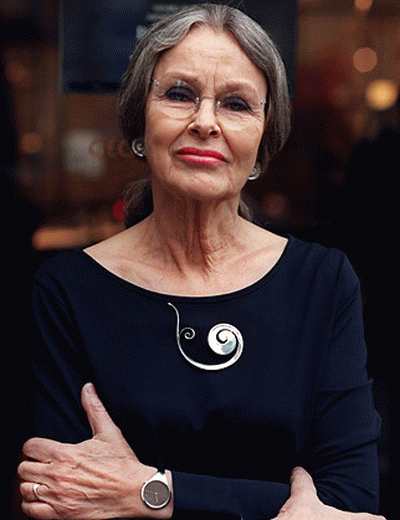
Vivianna Torun Bülow-Hübe
About
Vivianna Torun Bulow-Hube, know as Torun was born on December 7, 1927 in Malmo, Sweden. Her father was director of town planning in Malmo and her mother was a sculptor. Torun was the youngest of four children, born after a gap of nine years. All four children pursued artistic careers with a brother and sister becoming architects and another sister, a poet. But it was Torun who became the most famous, as the first woman silversmith in the world to gain international recognition.
Torun studied at Konstfack, the School of Arts, Crafts and Design in Stockholm, beginning in 1945 while pregnant with her first child, Pia. Eventually she married the child's father, a Danish journalism student. In 1948, Torun spent the summer in Paris meeting Picasso, Braque, Matisse and the other great artists of the day. She married a French architect and lived in Stockholm until 1956 having a second child, a son, Claude. As early as 1952, Torun exhibited her jewelry, made both in Stockholm and France (and bearing hallmarks from each country) in Paris.
In 1956, Torun and her husband divorced and she lost custody of her son. She moved to France with her third husband, Walter Coleman, an Afro-American painter, meeting many of the jazz greats of that time. She designed jewelry for among others, Billie Holiday which Holiday wore when she performed. The couple moved to Biot in the south of France in 1958 to avoid political problems they were encountering in Paris as a result of the war in Algeria.Torun produced many pieces during this period when young Swedish silversmiths would come to work in her studio, introducing her to new techniques. Torun renewed her acquaintance with Picasso who lived in the area and an exhibition of Torun jewelry was held at the Picasso museum in Antibes from 1958 to 1960. Torun had two children with Walter, Ira and Marcia.